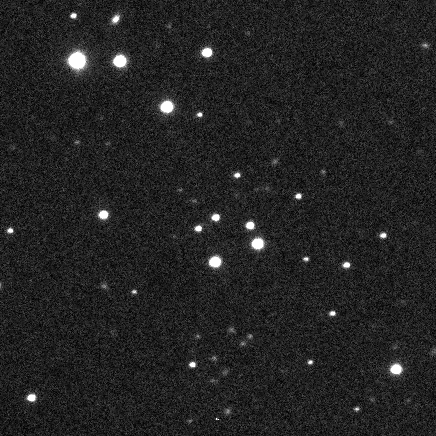TOP > Topics > 2004 > Figure of HAYABUSA’s Target Taken by Telescope and Radar
![]()
Figure of HAYABUSA’s Target Taken by Telescope and Radar
The explorer “HAYABUSA” is flying smoothly toward the asteroid Itokawa. Kind of celestial body is Itokawa, the final destination?
The following image shows figure of Itokawa taken by 2.2m telescope of University of Hawaii on January 26, 2004. Since asteroids go around the Sun just like planets such as Venus and Mars, they move against stars behind. The image overlaps several data of the same angle and displays in the way like flick-through comic. The moving white dot is Itokawa.
University of Hawaii 2.24-m telescope |
Rough figure of Itokawa was also caught by recent radar observation by NASA. This observation was made by using a large radio telescope of the Arecibo Observatory in Puerto Rico, Central America, by Steve Ostro of NASA Jet Propulsion Laboratory (JPL) and his group. They observed the actual shape of Itokawa by sending radio wave to it and measuring delay of returned wave. The asteroid has irregular shape like potato different from spherical planets.
JPL radar model |
HAYABUSA carries the advanced cameras and will investigate the entire figure and surface terrain of Itokawa, far more precisely than observation from the ground, for several months after its arrival. By combining this result with infrared and X-ray observation made simultaneously and analysis of substance of the asteroid’s surface that HAYABUSA will return to the earth, we can clear the experienced process of Itokawa in the history of solar system.
By passing through nearby the earth (swingby) in May 2004, HAYABUSA will change its trajectory largely and is expected to arrive at the Itokawa summer of 2005 under the support of ion engines.
For reference, asteroid Itokawa was named after Prof. Hideo Itokawa(1912-1999) who is "the Father of Japan's Space Development." .
May 25, 2004







